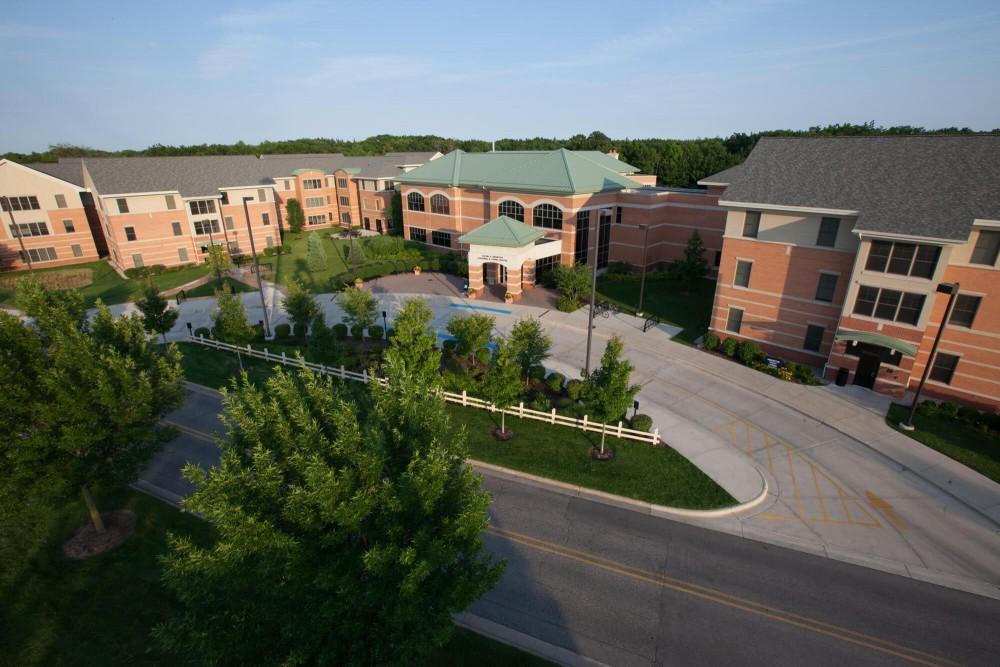Honors College establishes diversity task force, seeks to improve inclusion

Courtesy / Amanda Pitts
Feb 18, 2019
In the Fall 2017 semester, 81.9 percent of undergraduate students at Grand Valley State University were white, and minority students make up an even lesser percentage of GVSU’s Frederik Meijer Honors College.
Director of the Honors College Roger Giles recently spoke at a student senate meeting about some changes in curriculum, refocusing on issue-based courses and improving diversity. Senate members had plenty of questions and advice for Giles, many focusing on collaboration with campus diversity resource groups.
“I enjoyed my visit to the Senate,” Giles said. “Your president, Rachel Jenkin, made the very good point that such an effort is likely to reproduce rather than improve our diversity numbers. She’s right, of course, so we have to be strategic in terms of which high schools we focus on.”
The institution has since created an Honors Diversity Task Force, chaired by Honors Academic and Enrichment Advisor Megan Marshal. Goals for the Task Force include gaining a better understanding of the barriers that can prevent ambitious students of color from joining the Honors College and making recommendations to effectively reach out to them. Marshall has assembled the task force to compile faculty, staff and students for a range of experiences.
“We want to show that we are a welcoming place for all students and staff,” Marshall said. “The education process within the Honors College might also interrogate the very structures that have historically kept certain people out. We don’t want to tokenize students, but we know that we need to do better and the task force is the first step in working toward that.”
Giles speculates some of these barriers, real and perceived, could be high-achieving students of color being offered better scholarships, sometimes even full-ride scholarships, at other universities. This is why the Honors College personally reaches out to minority students who have been accepted to GVSU but have not yet applied to honors, first-year students of color who have done very well in their first semester and participants in December and January scholarship competitions. White students currently make up 88 percent of the Honors College, which is an improvement from the 93 percent majority from five years ago.
One issue is the hundreds of GVSU minority students who, for unknown reasons, choose not to apply to the program.
“We need to create an Honors College that those students want to be a part of,” Giles said. “One where they see themselves represented in their faculty and in the other students around them, and where they have a chance to learn about the context of their own lives within the curriculum.”
Adjustments in the Honors curriculum will begin to shift away from traditional academic subjects to embrace an interdisciplinary approach all four years. This includes demonstrating the importance of inclusion by utilizing broad and interesting topics from a range of disciplinary perspectives.
“It’s an exciting and dynamic approach to general education that we hope will appeal to many students, including minority students,” Giles said. “We want every one of our Honors courses to attend to issues of inclusion as an integral part of course content. Of course we also expect all Honors faculty to practice inclusive teaching strategies, which include many of the high-impact (practices) for which Grand Valley is known.”
These courses will be similar to those in the issues discipline in the general education program which are commonly target towards junior level standing students. Besides recruitment and a shift in curriculum, the Honors College is recognizing the resources available at GVSU to make further improvements in diversity. This includes establishing connections with local community colleges to create a clear path for their Honors minority students into the Honors College and outreach to campus organizations focused on supporting students of color.
“Groups like the Asian Student Union, the Black Student Union, Black Excellence, Laker Familia and the Latino Student Union obviously include many outstanding student leaders,” Giles said. “We believe they have a lot to teach us, and look forward to reaching out to them and starting a productive dialogue about how we can work together.”
Giles hopes for immediate improvement to include mirroring the university’s 83 percent white majority and to eventually become a diversity leader at the university. He believes the task force can help steer the institution in a direction for deeper cultural change, recognizing that creating a more diverse community requires a change to the entire culture. Marshall’s initial process of inquiry into the diversity issue will hopefully lead to the kind of thoughtful conversations around cultural issues that create effective recommendations.
“We also really want to get the word out that Honors is working to be a more welcoming place,” Marshall said. “That means having conversations with students, faculty and staff throughout the university to help us spread this message. We are hoping for demographic shifts in time, but we want all of our students to learn about complicated realities of our society for the purpose of building a better world.”























